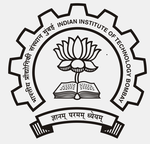Electronics Lab - 4: Microprocessors and Control systems
Prerequisites for this lab
Basic + Analog electronics. This lab can be run concurrently with Digital electronics. Many of the experiments in the microprocessor lab complement and augment the digital lab experiments.
The core idea in the microprocessor lab is to train students in developing systems that they can use to control and monitor experiments. This is best done with a micro-controller architecture like the Arduino family. Concepts of microprocessor architecture can be explored in accompanying theory lectures that deal with the stripped down 8-bit architecture of the Atmega series of micro-controllers. These boards provide an invaluable hands-on experience for students. The Arduino boards that contains this series of micro-controllers have direct digital and analog I/O pins. Being able to control a signal using a simple four line program and see the results on a digital oscilloscope in the first lab session is a big boost for students' motivation and interest.
Typically most students use Arduino boards in their fun extra-curricular projects like building robots etc. It is quite refreshing from the students' perspective to see their extra-curricular activities brought in to the classroom to be studied in a formal manner.
For more advanced microprocessor architecture intensive courses, a slightly advanced system like the Raspberry Pi can be used. The instructor must decide where to pitch the course curriculum:
- systems level programming which makes it more software intensive(the Raspberry Pi runs Linux and the students would have to pick up Linux systems programming skills in a one semester). Or
- data acquisition and control systems for physics experiments. The Arduino is an excellent platform for this objective, though the Raspberry Pi also offers opportunities in this area after some threshold of learning in objective (1) has been passed.
References for the Arduino family of microcontrollers is provided by the D.I.Y. community at arduino.cc and for the Raspberri Pi at raspberrypi.org
Projects
The hardware used in this lab typically allows for students to work on interesting project ideas over a four to five week period in the latter half of the course. The projects are done by students in groups of two or three after they have completed the sample assignments listed below. All students must have reasonable proficiency in the usage of micro-controllers to participate in, and actively benefit from the project phase.
Projects are to be done in a structured manner: design, evaluation, prototype, final product and demo with deliverables specified so that all participating group members can be evaluated on their contribution to the project. A sample project structuring document is here and here. List of sample projects completed in past years by students is available on the author's homepage
Representative experiments
Note: The assignments are set up in modular form. Students fill out answers in the provided space.
Marks are alloted by the teaching assistants as they complete each module. At the end of the session the students submit
the completed assignment and the marks are entered into a spreadsheet by the lab staff. There is no journal writing/correction required.
Close to the end-semester exam, the solved assignments are put up on Moodle for students to revise.
There is an element of surprise as the students don't know the exact problem they will work on when they arrive for a lab session.
They are given a review of the concepts involved in the preceding lecture. Hence it is important to co-ordinate the timetable such
that the lecture session occurs a few days before the lab session.
Discussion among the members of each group is encouraged during the lab session. The teaching assistants are required
to invigilate such discussions and mark the completed work based on the perceived contribution of the student to the group's work.
You are free to add new components to the experiments or suggest new experiments. When editing these assignment sheets, it
is suggested that you use MS Word 2010 on MS Windows. Unfortunately using other word processors or other OS
(Linux LibreOffice, MacOS Word etc) causes unwanted changes in the alignment of figures in the page layout.
Hence system agnostic PDF files are also provided.
| No. | Experiment | docx | |
|---|---|---|---|
| 1 | Hello world! Measure processor speed | P | |
| 2 | Analog output - pulse width modulation | P, S | |
| 3 | PID - Feedback control | P, S | |
| 4 | Finite State Machines | P, S | |
| 5 | Timers and Interrupts | P, S |
Lecture notes
The lectures must be focused on the content of the experiments you plan to proceed with during the semester. This a collection of lecture notes used to highlight some of the core concepts.
| No. | Title | pptx | |
|---|---|---|---|
| 1 | Introduction, course structure | pptx | |
| 2 | PID and Feedback control | pptx | |
| 3 | Finite State Machines | pptx | |
| 4 | Interrupts | pptx |
